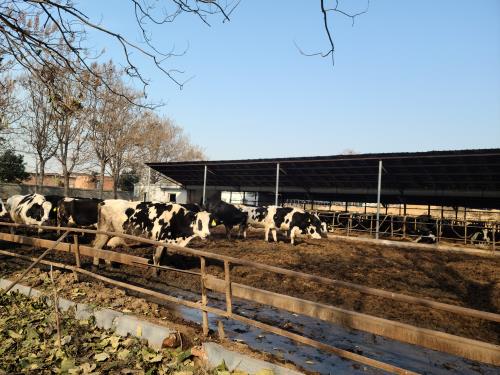Interpolation principle in veterinary B-ultrasound images
The interpolation processing of veterinary B-ultrasound images is an important part of the DSC system. The quality of interpolation processing directly affects the quality of the image. In veterinary B-ultrasound images, it is not only very necessary, but also an important indicator to measure the level of DSC.

The interpolation processing of veterinary B-ultrasound images, the image directly displayed without interpolation, has gaps between the scan lines, making the image uneven and discontinuous, and the quality of veterinary B-ultrasound images is poor. This is because the scan lines are sparse, and the distance between adjacent fan scan lines far away from the center of the circle will be greater than the width of a display pixel, resulting in many display pixels between the fan scan lines being vacant. At the farthest end of the fan scan line, the spacing is generally greater than 4-5 times the pixel width, that is, there are about 4-5 vacant pixels between two sampling points on the horizontal grating scan line at these positions. If these gaps are not filled, the image displayed on the screen will have a moiré pattern, affecting the quality of veterinary B-ultrasound images. The interpolation process is to use the approximate values of the echo signal sampling values around the vacant pixels and insert these approximate values into the corresponding vacant places before displaying the image to make the image uniform and continuous.
Secondly, the calculation of the selected ideal interpolation function itself also increases the complexity of the operation. Such interpolation operations are difficult to perform in real time. In order to meet the requirements of real-time processing, interpolation processing generally adopts the following principles:
(1) Select as few sampling points as possible to participate in the operation to reduce the amount of calculation.
(2) Use a simple interpolation algorithm to increase the speed of operation.
As far as the interpolation algorithm is concerned, there are simple filling, one-dimensional linear interpolation, two-dimensional linear interpolation and nonlinear interpolation, etc. Generally speaking, linear interpolation is better than simple filling, and nonlinear interpolation is more complicated than linear interpolation. Linear interpolation is usually used for comprehensive consideration of factors such as imaging effect and speed.
B-ultrasound easi-scan for cattle
Image retrieval technology for veterinary B-ultrasound
With the rapid development of multimedia technology and the Internet, the source of images is constantly expanding. Large-capacity and high-speed storage systems provide basic guarantees for the massive storage of images. The use of images in various industries is becoming more and more extensive, and the management and retrieval of image information resources are becoming increasingly important. The research on image databases will provide strong support for multimedia digital libraries, medical image management, satellite remote sensing images and computer-aided design and manufacturing, geographic information systems, criminal identification systems, trademark and copyright management, etc. There are already many veterinary B-ultrasound images.
Traditional text-based image retrieval is mainly carried out in the database field. Its typical framework is to first annotate veterinary B-ultrasound images with text, and then use a text-based database management system to retrieve images. This method is a simple and easy method when the number of images in the image library is small and the content of the images is relatively simple. However, when the number of veterinary B-ultrasound images is very large, there are two major difficulties in text-based veterinary B-ultrasound image retrieval: first, the workload required for manual annotation of veterinary B-ultrasound images is too large; second, the richness of the content of veterinary B-ultrasound images makes different people have different understandings of the same veterinary B-ultrasound image, and the subjectivity and inaccuracy of veterinary B-ultrasound image annotation may lead to the failure of the subsequent retrieval process.
Content-based veterinary B-ultrasound image retrieval has gradually become a research hotspot. Compared with traditional text-based retrieval methods, content-based veterinary B-ultrasound image retrieval retrieves images by automatically comparing features and extracting information from the veterinary B-ultrasound image itself. It is different from traditional text-based retrieval methods and integrates image understanding, pattern recognition and other technologies to overcome the defects of traditional technical methods.









